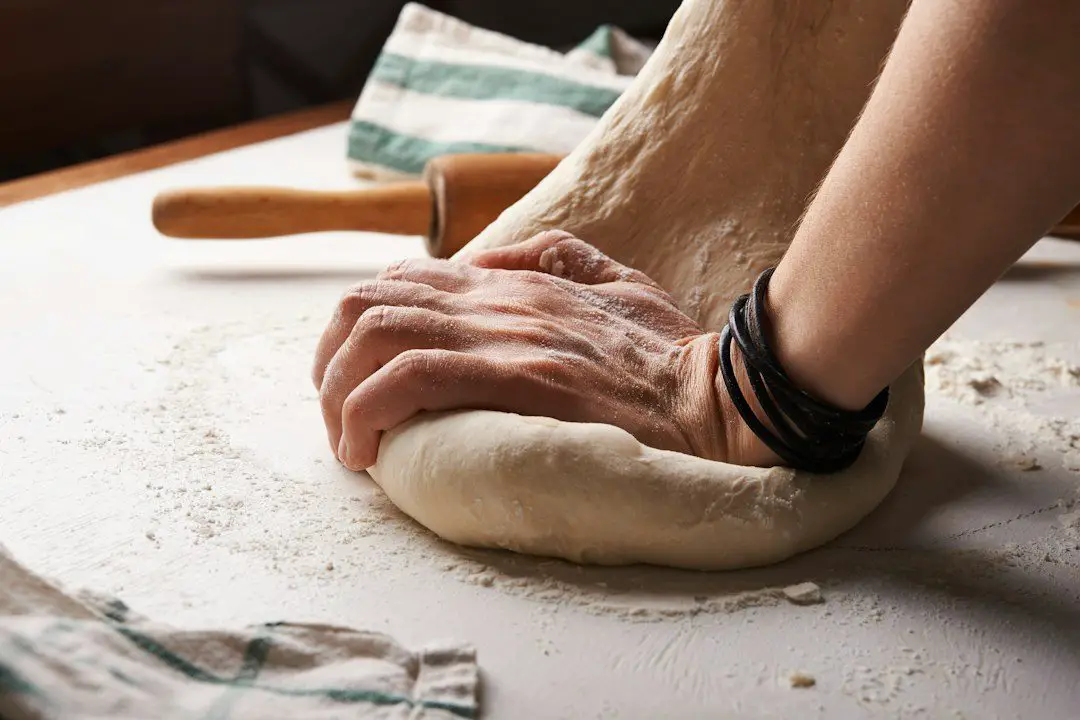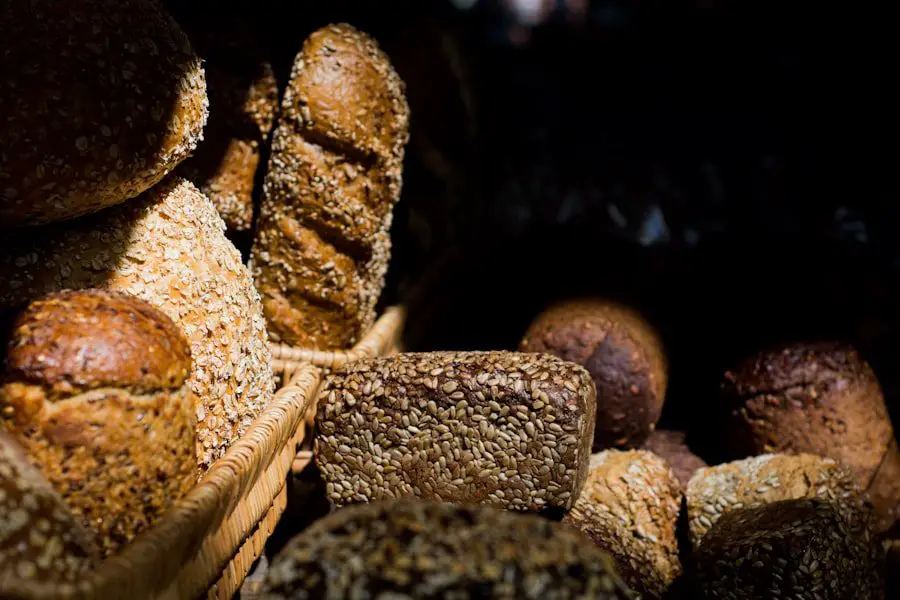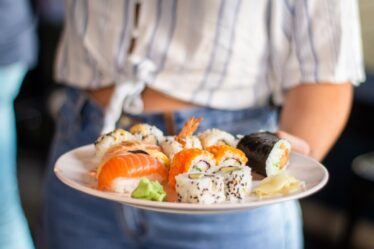
Pickling is a preservation method that has been used for centuries to extend the shelf life of fruits and vegetables. The process involves immersing the produce in a brine or vinegar solution, which not only helps to preserve the food but also imparts a unique flavor. One popular type of pickle is the bread and butter pickle, known for its sweet and tangy taste. In this article, we will explore the history of pickling and delve into the world of bread and butter pickles.
Pickling can be traced back thousands of years to ancient civilizations such as Mesopotamia and Egypt. The process was developed as a way to preserve food during times of scarcity or for long journeys. Over time, pickling techniques spread to different parts of the world, each region adding its own unique flavors and ingredients to the mix.
Bread and butter pickles are a type of sweet pickle that originated in the United States. The name “bread and butter” comes from the tradition of serving these pickles alongside bread and butter sandwiches. These pickles are made from cucumbers that are sliced into thin rounds or spears and then soaked in a brine made from vinegar, sugar, and spices. The result is a pickle with a sweet and tangy flavor that pairs well with a variety of dishes.
Key Takeaways
- Bread and butter pickles are a popular type of sweet and tangy pickle.
- To make the perfect pickle, you need cucumbers, vinegar, sugar, salt, and spices.
- Properly preparing your cucumbers by washing, trimming, and slicing them is crucial for optimal flavor.
- The perfect pickling brine should have a balance of sweet, sour, and salty flavors.
- Packing your jars tightly with cucumbers and spices will ensure maximum flavor infusion.
The Ingredients You Need for the Perfect Pickle
To make the perfect bread and butter pickles, you will need a few key ingredients. Here is a list of what you will need:
– Cucumbers: Choose firm, fresh cucumbers that are free from blemishes or soft spots. The size of the cucumbers will depend on your preference, but smaller cucumbers tend to be more flavorful.
– Vinegar: Vinegar is an essential ingredient in pickling as it helps to preserve the cucumbers and adds a tangy flavor. White vinegar or apple cider vinegar are commonly used in bread and butter pickles.
– Sugar: Sugar is what gives bread and butter pickles their sweet taste. You can use white sugar or brown sugar, depending on your preference.
– Salt: Salt is used to draw out moisture from the cucumbers and enhance their flavor. Use kosher salt or pickling salt, as table salt can contain additives that may affect the pickling process.
– Spices: Spices are what give bread and butter pickles their unique flavor. Common spices used include mustard seeds, celery seeds, turmeric, and cloves.
Each ingredient plays a crucial role in the pickling process. The cucumbers provide the base for the pickles, while the vinegar acts as a preservative and adds acidity. The sugar balances out the acidity of the vinegar and gives the pickles their sweet taste. Salt helps to draw out moisture from the cucumbers, which helps to preserve them and enhances their flavor. Finally, the spices add depth and complexity to the pickles, making them more flavorful.
The Importance of Properly Preparing Your Cucumbers
Properly preparing your cucumbers is essential for achieving the best results when making bread and butter pickles. Here are some tips for selecting, washing, and slicing your cucumbers:
– Selecting Cucumbers: Choose cucumbers that are firm and free from blemishes or soft spots. Avoid cucumbers that are overly large or have a yellowish color, as they may be overripe and not suitable for pickling.
– Washing Cucumbers: Before slicing your cucumbers, wash them thoroughly under cold running water to remove any dirt or debris. You can also use a vegetable brush to scrub the skin if necessary.
– Slicing Cucumbers: The size and shape of your cucumber slices will depend on your preference. Some people prefer thin rounds, while others prefer spears. Use a sharp knife or a mandoline slicer to ensure even slices.
It is important to note that the size and thickness of your cucumber slices will affect the pickling process. Thicker slices will take longer to pickle, while thinner slices will pickle more quickly. Experiment with different slice sizes to find the texture and flavor that you prefer.
How to Make the Perfect Pickling Brine
| Ingredient | Amount |
|---|---|
| Water | 2 cups |
| Vinegar | 1 cup |
| Salt | 1/4 cup |
| Sugar | 1/4 cup |
| Garlic | 2 cloves, minced |
| Dill | 1 tablespoon, chopped |
| Peppercorns | 1 teaspoon |
The pickling brine is what gives bread and butter pickles their distinct flavor. Here is a recipe for pickling brine:
– 2 cups vinegar (white vinegar or apple cider vinegar)
– 2 cups water
– 1 cup sugar
– 1/4 cup salt
– 1 tablespoon mustard seeds
– 1 tablespoon celery seeds
– 1 teaspoon turmeric
– 1/2 teaspoon cloves
To make the pickling brine, combine all the ingredients in a saucepan and heat over medium heat until the sugar and salt have dissolved. Stir the mixture occasionally to ensure that all the ingredients are well combined. Once the brine is ready, remove it from the heat and let it cool slightly before using.
It is important to properly mix and heat the brine to ensure that all the flavors are well incorporated. Heating the brine helps to dissolve the sugar and salt, allowing them to evenly distribute throughout the pickles. This ensures that each bite of pickle is perfectly seasoned.
The Art of Packing Your Jars for Optimal Flavor
Properly packing your jars is crucial for achieving optimal flavor in your bread and butter pickles. Here are some tips for packing your jars:
– Fill your jars tightly: Pack your jars tightly with cucumber slices, leaving as little empty space as possible. This will help to ensure that the pickles are evenly coated with the brine and will prevent them from floating to the top.
– Leave headspace: Leave about 1/2 inch of headspace at the top of each jar to allow for expansion during the pickling process. This will help to prevent the jars from breaking or leaking.
– Pour in the brine: Once your jars are packed with cucumbers, carefully pour the pickling brine into each jar, making sure to cover the cucumbers completely. Use a spoon or a chopstick to remove any air bubbles that may have formed.
– Seal the jars: Wipe the rims of the jars with a clean, damp cloth to remove any brine or residue. Place the lids on the jars and tighten them securely. You can use canning lids and rings or reusable lids, depending on your preference.
Properly packing your jars ensures that each pickle is evenly coated with the brine, resulting in a more flavorful pickle. It also helps to prevent spoilage and extends the shelf life of your pickles.
The Role of Spices in Creating the Perfect Pickle

Spices play a crucial role in creating the perfect bread and butter pickle. Here is a list of common pickling spices and how they contribute to the flavor of the pickle:
– Mustard seeds: Mustard seeds add a subtle heat and nuttiness to bread and butter pickles. They also help to enhance the flavor of other spices.
– Celery seeds: Celery seeds have a slightly bitter and earthy flavor that complements the sweetness of bread and butter pickles. They add depth and complexity to the flavor profile.
– Turmeric: Turmeric is responsible for giving bread and butter pickles their vibrant yellow color. It also adds a warm and slightly bitter flavor.
– Cloves: Cloves have a strong, sweet, and spicy flavor that adds warmth and complexity to bread and butter pickles. They also help to balance out the sweetness of the pickles.
Each spice contributes its own unique flavor to the pickles, creating a harmonious blend of sweet, tangy, and savory notes. Experiment with different spice combinations to find the flavor profile that you prefer.
How Long to Let Your Pickles Sit Before Enjoying
The pickling process takes time, and it is important to let your pickles sit for the proper amount of time before enjoying them. The length of time will depend on your personal preference and the desired texture of the pickles. Here are some tips for determining when your pickles are ready to eat:
– Taste test: After a few days of pickling, taste one of the pickles to see if it has reached your desired level of flavor. If you prefer a milder flavor, you can start enjoying your pickles at this point. If you prefer a stronger flavor, let them sit for a few more days.
– Texture test: Pickles will continue to soften as they sit in the brine. If you prefer a crunchier pickle, start enjoying them after a few days of pickling. If you prefer a softer pickle, let them sit for a week or longer.
It is important to note that the longer you let your pickles sit, the more intense the flavors will become. However, be careful not to let them sit for too long, as they may become overly soft or mushy.
Tips for Storing Your Pickles for Maximum Freshness
Properly storing your pickles is essential for maintaining their freshness and extending their shelf life. Here are some tips for storing your bread and butter pickles:
– Refrigerate your pickles: Once your pickles are ready to eat, store them in the refrigerator to keep them fresh. The cold temperature will help to slow down the fermentation process and prevent spoilage.
– Use airtight containers: Transfer your pickles to airtight containers, such as glass jars or plastic containers with tight-fitting lids. This will help to keep out air and moisture, which can cause the pickles to spoil.
– Keep pickles submerged in brine: Make sure that your pickles are fully submerged in the brine at all times. This will help to prevent them from drying out and becoming tough.
– Label and date your pickles: To keep track of the freshness of your pickles, label each container with the date that they were made. This will help you determine when it is time to enjoy them or discard them.
By following these storage tips, you can enjoy your bread and butter pickles for several weeks or even months, depending on how well they are stored.
Creative Ways to Use Your Pickles in Recipes
Bread and butter pickles are not only delicious on their own but can also be used as an ingredient in a variety of recipes. Here are some unique recipes that incorporate pickles:
– Pickle Dip: Combine cream cheese, sour cream, chopped pickles, and pickle juice to create a tangy and creamy dip. Serve with crackers or vegetables for a tasty appetizer.
– Pickle Slaw: Add chopped pickles to your favorite coleslaw recipe for an extra burst of flavor. The tanginess of the pickles pairs well with the creaminess of the dressing.
– Pickle Grilled Cheese: Layer sliced pickles between slices of cheese and bread before grilling for a twist on the classic grilled cheese sandwich. The pickles add a tangy and crunchy element to the sandwich.
– Pickle Potato Salad: Add chopped pickles to your favorite potato salad recipe for a tangy and refreshing twist. The pickles add a burst of flavor and crunch to the salad.
– Pickle Deviled Eggs: Chop up pickles and add them to your deviled egg filling for a tangy and flavorful twist. The pickles add a unique twist to this classic appetizer.
These are just a few examples of how you can incorporate pickles into your recipes. Get creative and experiment with different dishes to discover new and exciting ways to use your bread and butter pickles.
Enjoying the Fruits of Your Pickling Labor
Making bread and butter pickles at home is a rewarding and delicious process. By following the steps outlined in this article, you can create the perfect pickle that is sweet, tangy, and full of flavor. From selecting the best cucumbers to packing your jars with care, each step plays a crucial role in achieving the best results.
So why not give it a try? Pickling is a fun and versatile way to preserve and enhance the flavors of your favorite fruits and vegetables. Whether you enjoy your pickles on their own or use them as an ingredient in recipes, the fruits of your pickling labor are sure to be enjoyed by all. So roll up your sleeves, gather your ingredients, and start pickling today!
If you’re looking for more delicious recipes to try, check out this article on Easy Coconut Milk Korma Recipe. It’s a flavorful and creamy dish that combines aromatic spices with the richness of coconut milk. Perfect for those who love Indian cuisine or anyone looking to add some exotic flavors to their meals. Give it a try and elevate your cooking game!



